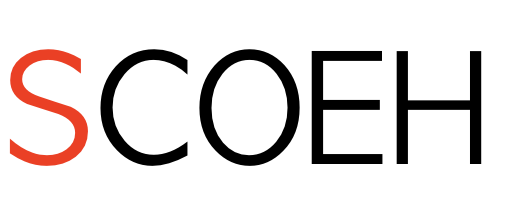Have I lost my mind when I say that mandating everybody to wear hygiene masks (surgical masks) could help reduce the spread of COVID-19? Didn’t I get the message that they are useless? No. I have decades of experience with personal protective devices and inhalable and respirable particles are my research passion. I know very well that hygiene masks are a poor measure to protect the wearer against inhaling airborne particles.
But let’s first look at the mask facts. The CDC has a nice factsheet that explains the difference between a hygiene mask and a respirator. In a nutshell, the hygiene mask is intended to protect a patient from the doctor’s respiratory emissions, while the respirator is designed to filter out most of the particles in the air. I fully agree with this assessment.
What I propose is to use hygiene masks as an emission control device. We know this from environmental hygiene: If you equip all particles sources such as diesel cars, chimneys etc. with filters, you will be able to walk the streets in your city without a respirator mask. We also know that most emissions from streets come from very few high polluters.
Let me explain the concept for adressing COVID-19 with a simple model.
The model
Let’s take the situation where you are together with ten people in a room. Each of them carries the virus. Six have clear symptoms, four have only mild or no symptoms at all. Some don’t even know they have the virus. Let’s assume that those with strong symptoms emit four-times more virus particles than those with mild symptoms.
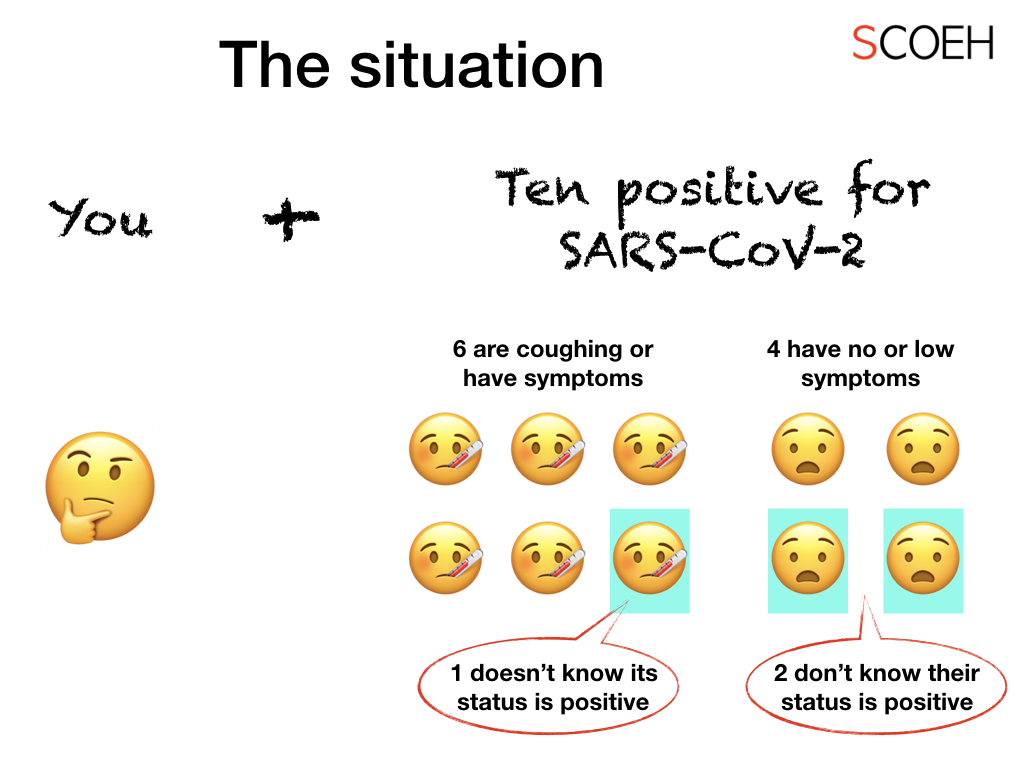
Let’s now take two masks, a respirator with 98% filtration efficiency, and a poorly fitting hygiene mask that has only 50% filtration efficiency, and which lets about 5% of exhaled particles into the air. So this is a horribly performing hygiene mask.
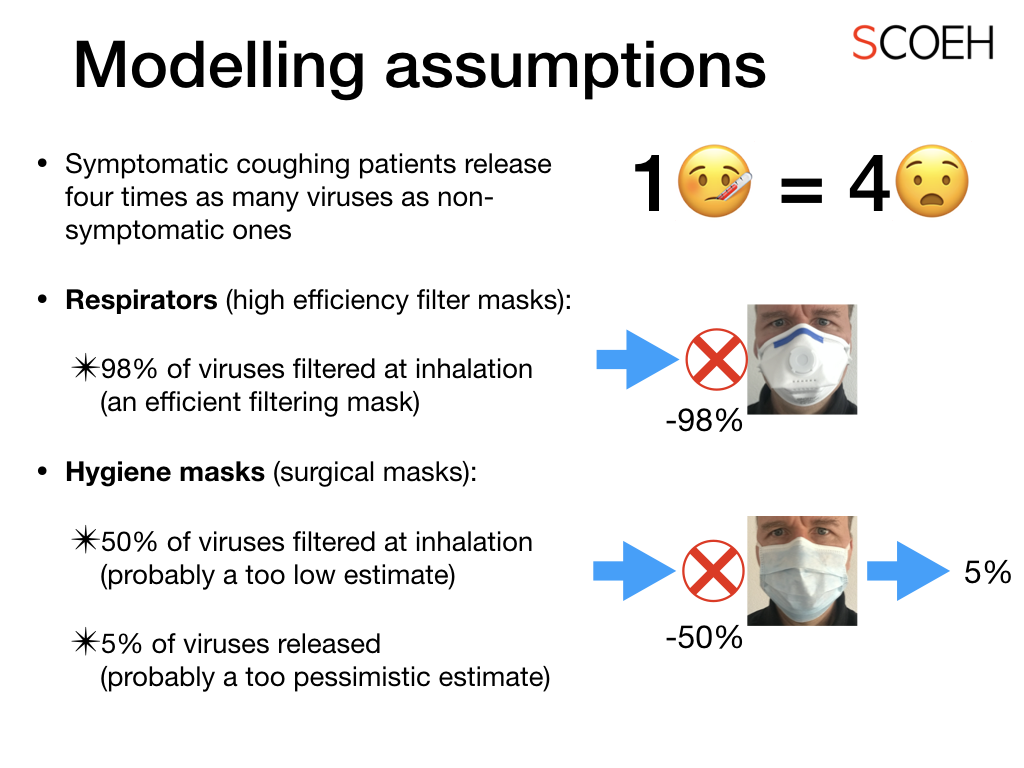
The base-scenario: hygiene masks do not protect if there are viruses in the air
Let’s first look at the baseline scenario: If a non-symptomatic person releases 100 arbitrary units of viruses, those with symptoms will release 400 units per person. This gives us a baseline of 2800 units in the air.
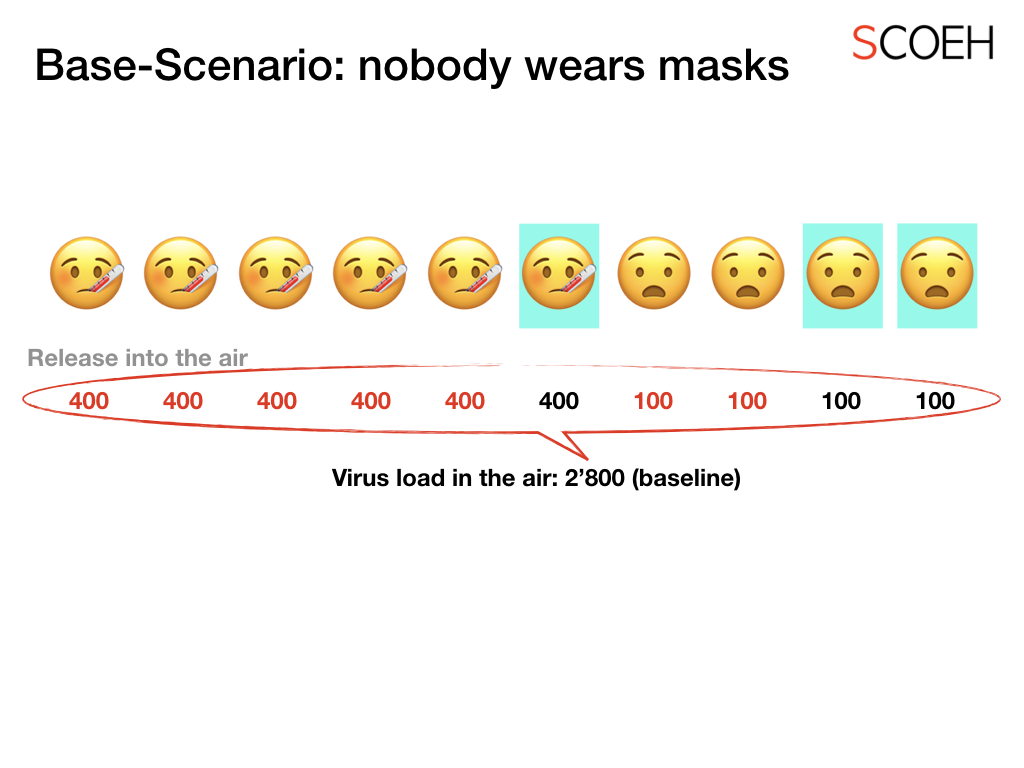
At the baseline scenario, wearing a hygiene mask is not a sufficient personal protection against viruses in the air. The respirator clearly wins in this situation.
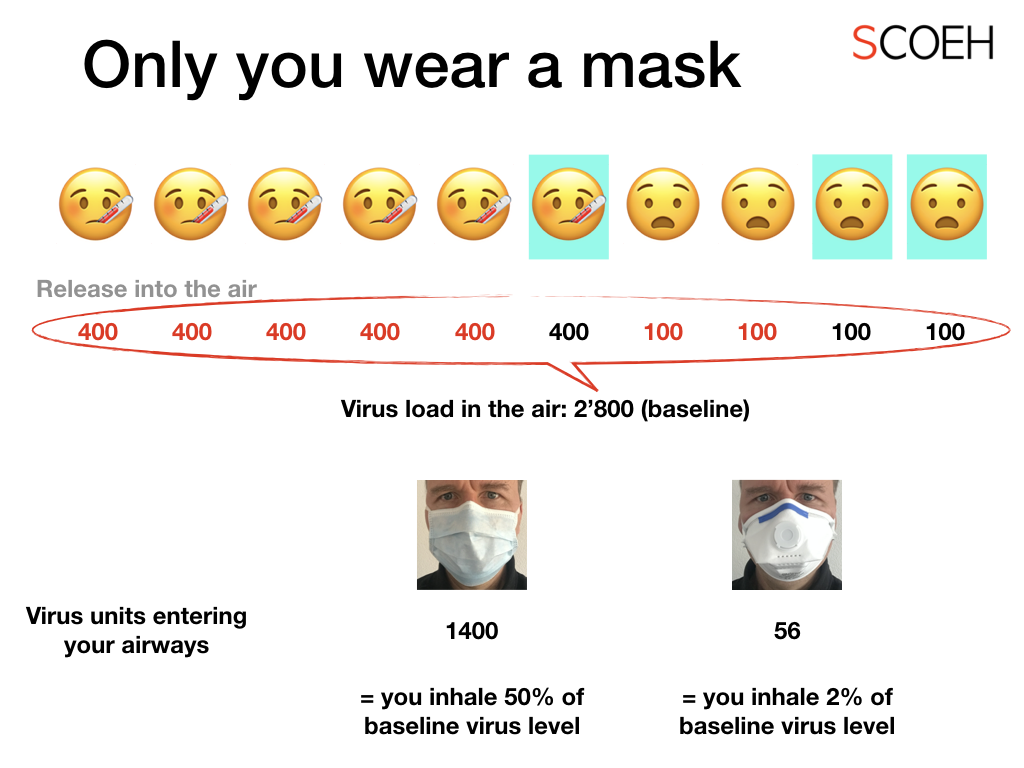
Case solve. Really? Let’s first look at the other scenarios!
Next scenario: all with symptoms wear a hygiene mask
This scenario corresponds to what is recommended in many pandemic recommendations. It assumes that only those having symptoms will be spreading the disease. However, we have indications that this is not the case for COVID-19. Here, also those with mild and no symptoms can spread the virus.
With this measure, you reduce the number of viruses in the air, but only to about 19% of the baseline. Thus, we must expect that the virus will continue to spread happily. Also here, wearing a hygiene mask is not a sufficient personal protection.
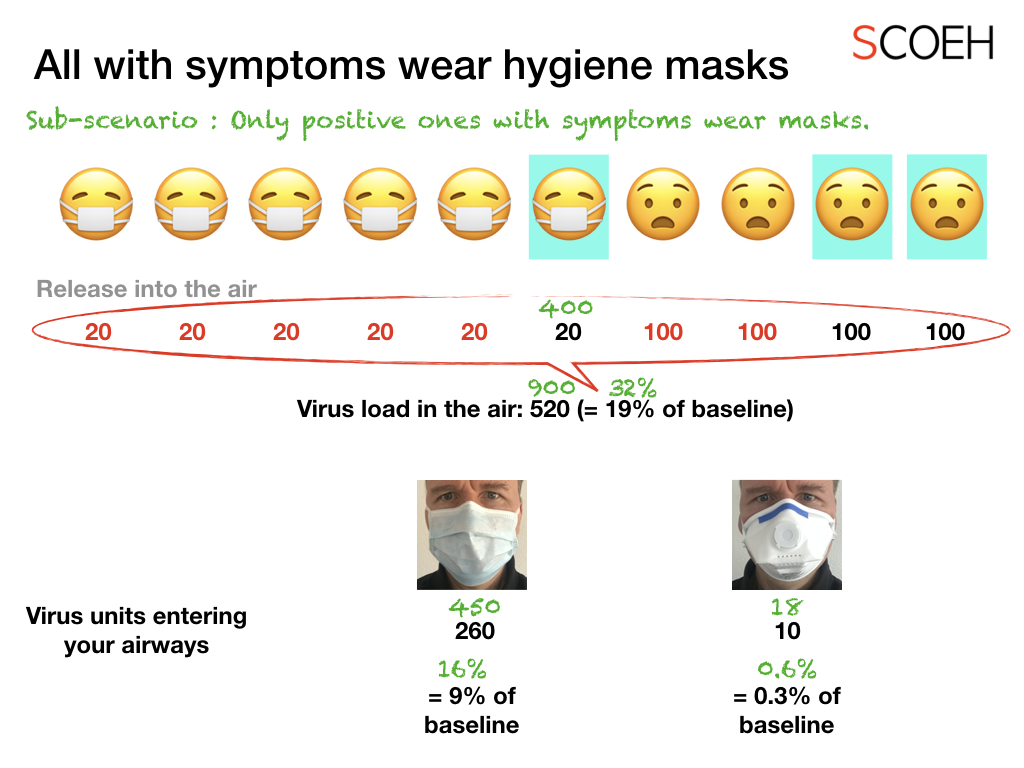
The situation is actually worse if you ask only confirmed cases with symptoms to wear a hygiene mask. Bad idea. The numbers jump up immediately due to the non-tested case.
Final scenario: everybody wears a hygiene mask
Once all wear a mask, we manage to bring down the airborne levels to 5%. This is already a quite good reduction. Even if you wear a very poorly performing mask, you will reach a total performance that is almost as good as wearing a respirator at the baseline situation!
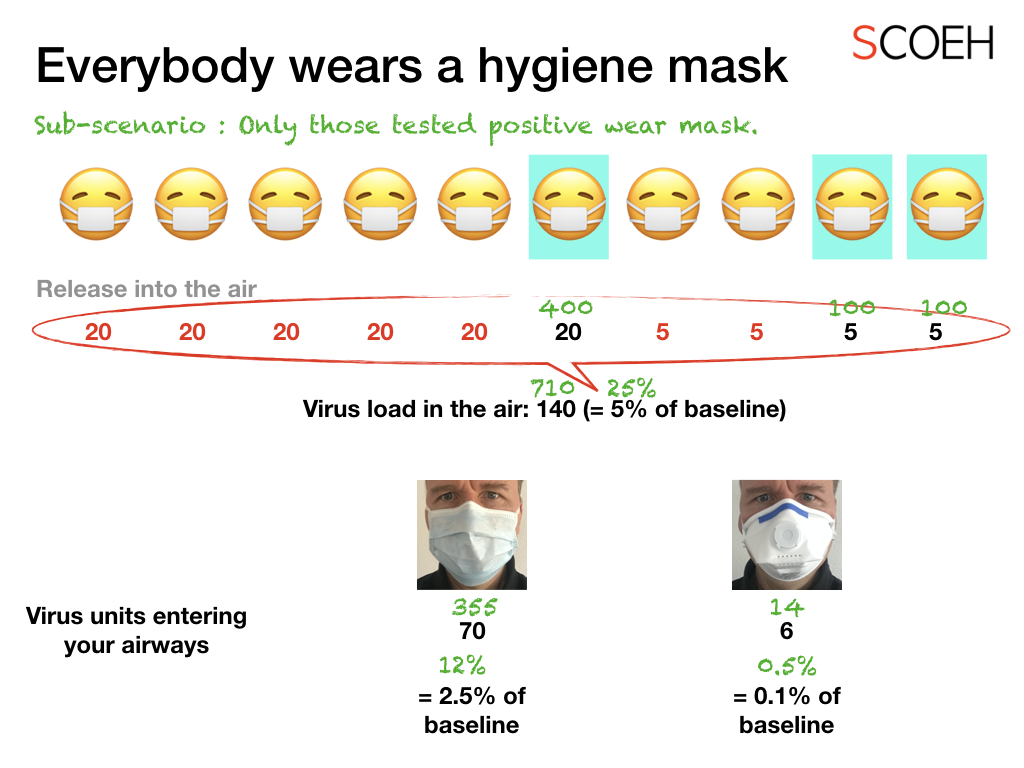
An added plus is that the protection of those wearing high efficiency respirators, such as medical staff is much better.
.
